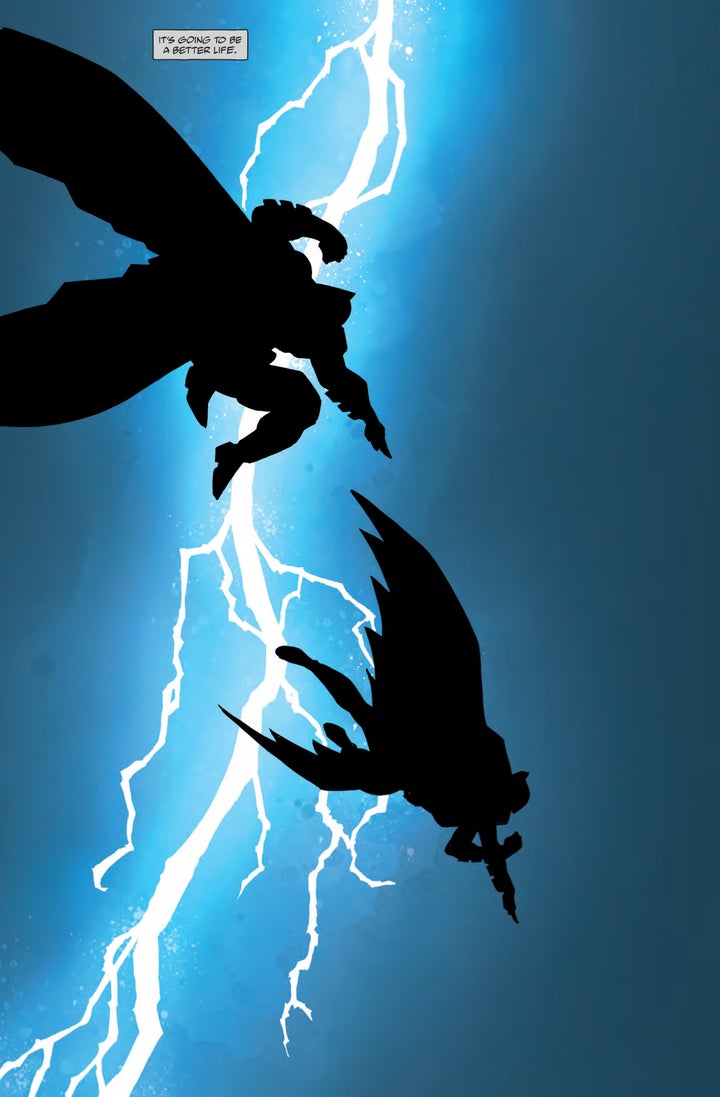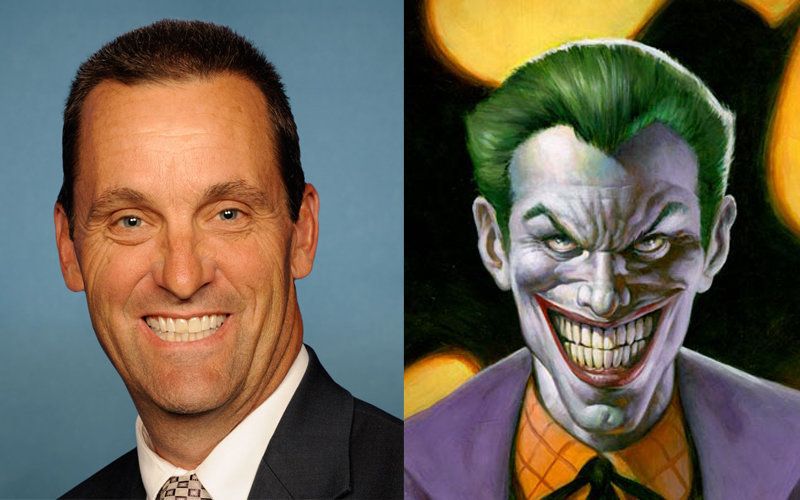
Despite the magic lassos and speedsters and power rings, when it comes to the world of superheroes, humanity is ultimately our way into a story. It’s how super-powered beings interact with regular humans ― and even their own human characteristics ― that largely determines how audiences feel about them.
Batman is famously the hero without supernatural powers or artifacts. He does, however, have a ton of money, a high level of intelligence and a borderline psychotic devotion to punishing criminals, stemming from the childhood trauma of seeing his parents gunned down. So it’s no surprise that Batman has regularly been the perfect conduit between the human and superhuman worlds. And there are examples of this across a variety of mediums.
The success of Christopher Nolan’s “Batman” trilogy, starting with 2005’s “Batman: Begins,” helped ground the broader world of superhero films. With a few exceptions, previous items in the genre tended to be campy, poorly written or smothered in awkward CGI, as was the case with films like 1997′s “Batman & Robin,” and “Daredevil” and “Hulk” in 2003. And now, even Superman ― as portrayed in 2013′s “Man Of Steel” ― is brooding, bearded and snapping villains’ necks. An award-winning ’90s animated series proved that a Batman cartoon could be dark and mature, not to mention have a brilliant musical score, wh “Batman: The Animated Series” won the Primetime Emmy for Outstanding Animated Program in 1993, the first superhero cartoon to ever be nominated, let alone win.
But one could argue it was Frank Miller’s ’80s comic book miniseries “The Dark Knight Returns” that made this current era of “real” superheroes possible. “The Dark Knight Strikes Again” continued that tradition in 2001. And now, Miller and artist Klaus Janson have returned to reconnect the world of humans and superhumans with “The Dark Knight III: Master Race.”
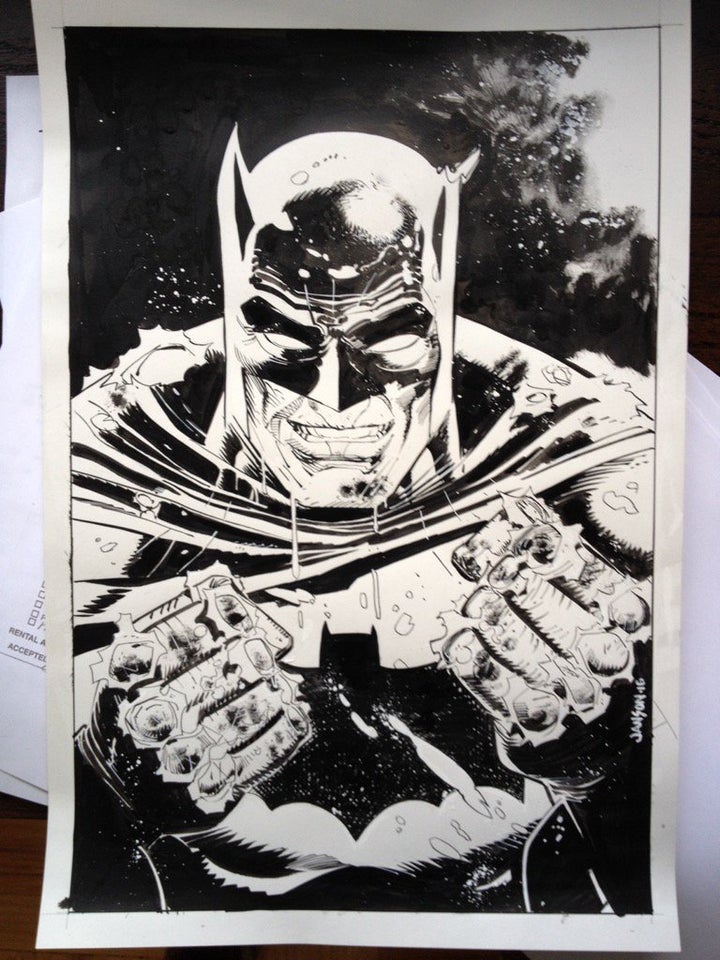
The plot of “Master Race” is straightforward: At the start, Batman is presumed dead, Superman is absent, and Wonder Woman lives in Themyscira, raising her and Superman’s infant son while trying to guide their grownup daughter Lara.
“Master Race” centers on the return of the Kandorians, whose Kryptonian city of Kandor was once shrunk down and imprisoned by the villain Brainiac prior to Krypton exploding (a bright side, I guess). Superman rescued the Kandorians but was unable to return them to their proper size, and so they’ve lived within a small bottle in the Fortress of Solitude ever since. (Yes, weird.) In Superman’s absence, the Kandorians have asked Ray Palmer, The Atom, to help in new efforts to restore their size, which he does. But The Atom learns immediately that it was not the Kandorians who wanted out, but a maniacal cult led by Quar, a Kryptonian who believes he’s a god among men. He and his followers ― all with powers comparable to Superman ― are now let loose on Earth and demand outright subservience from the human race.
Frank Miller wrote the roots of this tale, “The Dark Knight Returns,” in 1986, a kind of what-if story about an old, worn out and retired Bruce Wayne returning to the cowl. Illustrated by Miller and Janson, it was a new idea for mainstream comics, which had never really allowed their heroes to age or appear quite so pathetic.
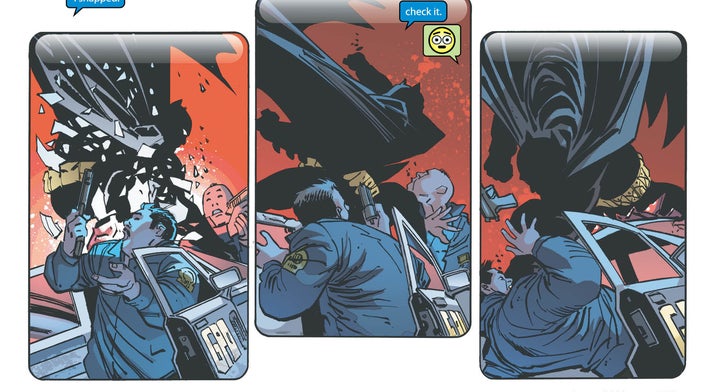
“Klaus and I came into comics in a time when nobody got beat up,” Miller, who launched his brooding and grim view of the comic book world when he took over writing duties for “Daredevil” in the early ’80s, explained to HuffPost over the phone. “People were punching each other and nobody got hurt.”
“Frank is so good at bringing the character down to a certain level where they are just completely beaten up,” Janson, present on the joint phone call, added. “Psychologically and physically.”
And people do get hurt in “Master Race.” Not just hurt, but leveled. And not just Batman, but the entire Justice League shows their age. Superman, Flash, Green Lantern and Atom each become lost or broken (literally) during the story. The emergence of this new, powerful enemy, Quar’s Kryptonian cult, reduces our heroes closer to the level of us powerless humans, making it even more critical for them to work as a team. And making it it even more significant that the effort is led by the team’s lone “powerless human,” Batman.
This is certainly a story about the Justice League ― who oddly enough have a gloomy-looking film coming to theaters in November ― a group which can be difficult to juggle, but which Miller has assembled wonderfully. His stripped down style ― air tight dialogue, rarely a wasted panel ― forgoes needless exposition. As should always be the case, the images tell the story.

If you’ve read any past “Dark Knights” then you know Miller enjoys using the talking heads of the media world as a particular visual storytelling device. Satirized characters include lookalikes of Bill O’Reilly, the Fox & Friends cast, Wolf Blitzer, Van Jones, Kellyanne Conway and of course, Donald Trump. The Trump character is portrayed spewing meaningless observations and pitching insane ideas ― for example, a net around the world to protect us from aliens. Miller’s “Fox & Friends” parody characters are as vapid and vacuous as you would imagine.
“As I get older, I’m more aware of the dubious nature of some of the reportage that we get over the news,” Janson said. “I think Frank was way ahead of the curve in terms of that. Even as I was inking ‘Dark Knight Returns,’ I wasn’t consciously aware of what Frank was saying with the interpretation of news as a cacophony. But he was right then and he’s right now.”
Peppered throughout the book, these panels continue to be an entertaining aspect of the “Dark Knight” series, connecting that superhero world we love imagining with the hyperactive and fractured world that unfortunately requires little imagination.
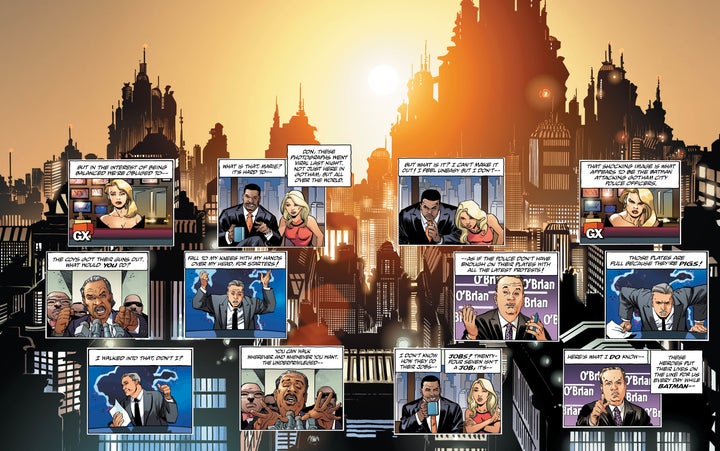
America has a sordid affair with its two-party system. We wrap ourselves in its comfort about as often as we decry its limited scope. No matter the issue, we’re generally provided two approaches based on left- and right-leaning ideologies, with everyone ― all under one “roof” ― ultimately hoping for the best outcome. The dichotomous alliance between Batman and Superman is similar. It’s a cornerstone of the “Dark Knight” series, and it’s a relationship that Miller says he loves to test.
“Both are unquestionably heroes, with profoundly different views of the world,” says Miller. “Superman believes in a well-ordered world, where things just have to be corrected now and then, whereas Batman believes that something is terribly wrong and needs to be fixed.” On the same side, but constantly at odds. Sound like any politically divided nation you know of?
“The Dark Knight” series is an American story in that sense. And like America, despite its often dark reputation, all three books in “The Dark Knight” series contain an underlying optimism about the future, the urge to rebuild after the storm. After the near-nonstop destruction and brutality, Miller’s stories end in that spirit of rebuilding, whether it be repairing the demolished city of Gotham after violent civil unrest, or mending the strained relationship between Superman and Lara after a father-daughter super brawl. These growing pains are inevitable, but we can heal and build back stronger than before.

And that is ultimately the creators’ favorite aspect.
“I think it’s about not getting stuck in the present and being hopeful that tomorrow is a better day,” Janson said. “In direct contrast to some of the reputation ‘Dark Knight Returns’ has, I still think there is a certain sense of optimism in all three of them.”
In “Master Race,” that optimism about humanity is the difference. It’s the line that separates one all-powerful Kryptonian’s effort to conquer a planet, and one Kryptonian’s effort to save it. One could spend days debating the literary tropes and symbolism within “Master Race,” its themes of xenophobia or the inharmonious nature of modern day media coverage, but for Miller and Janson, it’s all, ultimately, about telling a great story.
“We are storytellers, and you know we can dip into that [more pretentious] area, but there is another part of it,” Janson explained. “We are entertainers.”
On his contribution to the Batman mythos, Miller echoed his artist, saying, “I hope people will come away from it saying, ‘That was a ripping good yarn and he’s a really cool character.’”
The complete collection “The Dark Knight III: Master Race” series comes out Sept. 13, and I can tell you, it is a ripping good yarn.
